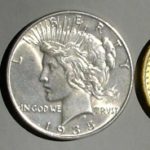Yesterday’s trade saw GBP/USD within the range of 1.3241-1.3340. The pair closed at 1.3287, edging up 0.19% compared to Fridays close. It has been the 131st gain in the past 286 trading days. The cross has fallen 0.64% so far during the current month, after depreciating 7.94% in June. The latter has been the worst monthly performance since October 2008.
At 6:38 GMT today GBP/USD was losing 0.47% on the day to trade at 1.3224. The pair touched a daily high at 1.3291 during the early phase of the Asian trading session and a daily low at 1.3216 at 6:31 GMT.
On Tuesday GBP/USD trading may be influenced by the following macroeconomic reports and other events as listed below.
Fundamentals
United Kingdom
Services PMI
Activity in United Kingdom’s sector of services probably increased at a slower rate in June compared to a month ago, with the corresponding PMI coming in at 52.7, down from 53.5 in May. If market expectations were met, June would be the 42nd consecutive month, when the gauge inhabited the area above 50.0. In May the gauge of business sentiment rose to its highest level in ten months, although expectations were influenced by the EU membership vote. New business growth in the sector reached its lowest level in 41 months in May, while employment growth slowed to a 33-month trough.
The index is based on a survey, encompassing managers of companies, that operate in sectors such as transportation, communications, IT, financial intermediation, tourism. They are asked about their estimate regarding current business conditions (new orders, output, employment, demand in the future). Values above the key level of 50.0 signify predominant optimism (expansion in general activity). A larger-than-projected deceleration in the index would have a moderate bearish effect on the Sterling. The Chartered Institute of Purchasing and Supply (CIPS) is expected to release the official reading at 8:30 GMT.
BoE Financial Stability Report
Released twice every year by the Bank of England and under the guidance of the interim Financial Policy Committee, the Financial Stability Report reflects the Committees outlook assessment of the stability and resilience of the financial sector in the country at the time the report is prepared. This document also shows the policy actions that are to be taken in order to diminish risks to stability. A hawkish financial outlook by the Committee is usually pound positive, while a dovish view usually has a bearish effect on the national currency. The report is to be published at 9:30 GMT.
At the same hour Bank of Englands Governor, Mark Carney, is expected to speak.
United States
Factory Orders
The total value of factory orders in the United States probably shrank 1.0% in May compared to April, according to the median estimate by experts, following an unrevised 1.9% surge in the preceding month. The latter has been the steepest increase since June 2015, when factory orders went up 2.2%. In April, orders for non-defense capital goods excluding aircraft, a gauge of business confidence and spending plans, shrank 0.6% compared to a 0.8% decrease, as reported in the preceding month.
Excluding the sector of transportation, factory orders went up 0.5% in April from a month ago, while extending gains in March.
The general index reflects the total value of new purchase orders, placed at manufacturers for durable and non-durable goods, and can provide insight into inflation and growth in the US sector of manufacturing. In case the general index of new orders decreased at a faster-than-anticipated rate, this would trigger a moderate bearish impulse for the US dollar, as it implies future growth deceleration. The US Census Bureau will release the official data at 14:00 GMT.
Feds Dudley Speech
At 18:30 GMT the Fed President for New York and also a FOMC member, William Dudley, is expected to take a statement. Any remarks in relation to the US macroeconomic outlook, or the Banks monetary policy stance will certainly heighten USD volatility.
Bond Yield Spread
The yield on UK 2-year government bonds went as high as 0.190% on July 4th, after which it closed at 0.157% to lose 2.3 basis points (0.023 percentage point) compared to July 1st.
Meanwhile, the yield on US 2-year government bonds climbed as high as 0.597% on July 4th, after which it fell to 0.589% at the close to lose 0.008 percentage point compared to July 1st.
The spread between 2-year UK and 2-year US bond yields, which reflects the flow of funds in a short term, widened to 0.432% on July 4th from 0.417% on July 1st. The July 4th yield spread has been the highest one since June 30th, when the difference was 0.476%.
Daily, Weekly and Monthly Pivot Levels
By employing the Camarilla calculation method, the daily pivot levels for GBP/USD are presented as follows:
R1 – 1.3296
R2 – 1.3305
R3 (range resistance) – 1.3314
R4 (range breakout) – 1.3341
S1 – 1.3278
S2 – 1.3269
S3 (range support) – 1.3260
S4 (range breakout) – 1.3233
By using the traditional method of calculation, the weekly pivot levels for GBP/USD are presented as follows:
Central Pivot Point – 1.3316
R1 – 1.3514
R2 – 1.3762
R3 – 1.3960
S1 – 1.3068
S2 – 1.2870
S3 – 1.2622
In monthly terms, for GBP/USD we have the following pivots:
Central Pivot Point – 1.3818
R1 – 1.4510
R2 – 1.5710
R3 – 1.6402
S1 – 1.2618
S2 – 1.1926
S3 – 1.0726





